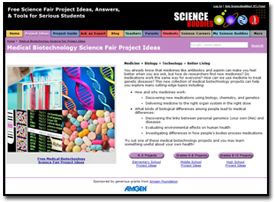Biomedical Engineering and Heart Health

As a biomedical engineer at Medtronic, Katie Hilpisch is making a difference in people's lives. "It is rewarding to meet someone who finds out that you work at Medtronic and wants to tell you that someone they know has a Medtronic device."
For Katie Hilpisch, a senior biomedical engineer at Medtronic, helping devise therapies for heart patients is all in a day's work!
According to Katie, biomedical engineering offers an exciting combination of research, problem-solving, and fieldwork. Biomedical engineering brings engineering, medicine, and biology together, but not all biomedical engineers do the same things or work on the same kinds of product development, research, and testing. At a large company like Medtronic, there may be many biomedical engineers working on different facets of a larger health issue. Katie and her team, for example, work in the area of "heart health," exploring medical therapies for patients with heart problems, specifically electrical stimulation (pacing) therapies. At the same time, other biomedical engineers work on different aspects of heart health, like exploring new imaging technologies that let doctors better see "inside" the body or researching the ways different substances interact in the human body.
A Collaboration Between Math and Science
Figuring out the right combinations and solutions to improve a heart patient's quality of life is a puzzle that biomedical engineers are constantly trying to solve. According to Katie, "my job is all about math and medicine!" It's a combination students might not immediately think about, but for biomedical engineers, science and math work together as keys to helping problem-solve, troubleshoot, and find solutions.
"Here's a very specific example," says Katie, "on a project I was recently working on, we were trying to reduce the flow of blood through an artery by 80%. We had to find the area of the vessel to determine an appropriate new size of the vessel to get an 80% reduction. Think geometry. Think statistics. Think measurements and calculations that you are learning right now in school!"
Between Desk and Lab
Katie splits her time at Medtronic between desk work and lab work. She estimates she spends 75 percent of her time doing computer-based research and analysis and 25 percent of her time working in research labs or in hospitals.
"Data analysis is a huge part of my job," she explains, "so using software to analyze data and calculate statistics is a big part of my repertoire. " Reading and staying up to date with both current and historical research and trials is also critical, says Katie. You have to "read anything that gives you insight into what has already been done or what other people are working on," she explains, "We don't want to re-invent the wheel."
In fact, Katie wants to take what exists and find new and better wheels. It's a process of finding the right combination and approach to improve life for patients, and that's what she enjoys most about her job. "Hands down, I most enjoy helping patients. It is very rewarding to come to work every day and get the chance to do something that helps people who are sick."
Advancing Treatment
Working at a global company like Medtronic, means that specialized groups are able to take advantage of each other's research and development when envisioning new solutions, therapies, and treatments. Katie's group isn't working on drug therapies, for example, but others at Medtronic are. Similarly, Medtronic biomedical engineers work with drug pumps, pacemakers, and other equipment that may come into play in a plan for a new heart therapy.
The process of putting new therapies into action, however, is one that takes time. New therapies go through many different types of testing, including lab-based testing using computer simulations or machines built to test possible answers. According to Katie, other stages in testing may include pre-clinical testing at Medtronic's Physiologic Research Lab, small patient studies to test for safety and effectiveness, and finally larger patient studies.

Answers Take Time
On paper, the point from A to B may seem pretty clear-cut, but it can take years of testing to ensure a therapy is safe and effective. With testing of new therapies averaging 3-5 years, it is clear that accepting that testing takes time is part of the game plan for biomedical engineers. "Usually when we are planning for products, we are looking at things in a 1-2, 2-5, 5-10 and 10+ years' time frame!"
A Future in Biomedical Engineering
According to Katie, students interested in a possible career in biomedical engineering should take as much math and science as they can. But beyond schoolwork, Katie encourages students to also think outside of school. "Figure out what sets you apart," she urges. "Do something nerdy outside of school. Join a group that takes apart toasters and puts them back together. Or even volunteer at a local science museum. " For Katie, when you think about what you want to do with your life, the mantra is simple: "Always do something you love. Then it won't be 'work.'"
For Katie, heart health and biomedical engineering is where she wants to be right now. "It is rewarding to meet someone who finds out that you work at Medtronic and wants to tell you that someone they know has a Medtronic device," says Katie. "My own grandfather has a Medtronic pacemaker, so when people ask what gets me to work every day, I tell them, in the end, it's the patients."
Categories:
You Might Also Enjoy These Related Posts:
- Black History Month - Learn More About these 38 Scientists for Black History Month!
- Native American Scientists and Engineers--Native American Heritage Month in Science Class
- Hispanic Scientists and Engineers - Hispanic Heritage Month
- Test-Drive a STEM Career with Fun Science Experiments
- STEM is for Everyone: Jane Goodall, Zoologist
- STEM is for Everyone: Annie Jump Cannon, Classifier of Stars
- 2020 Nobel Science Experiments for K-12 Students
- STEM is for Everyone: Helen Taussig, Pediatric Cardiologist









